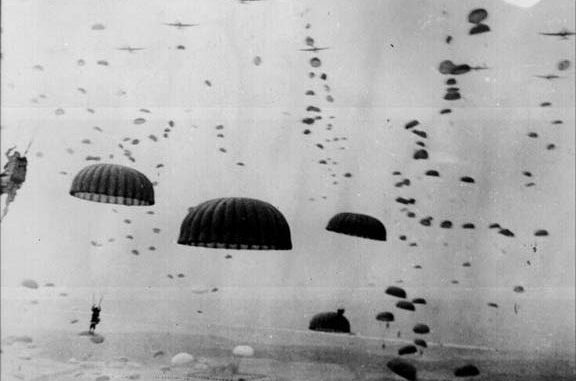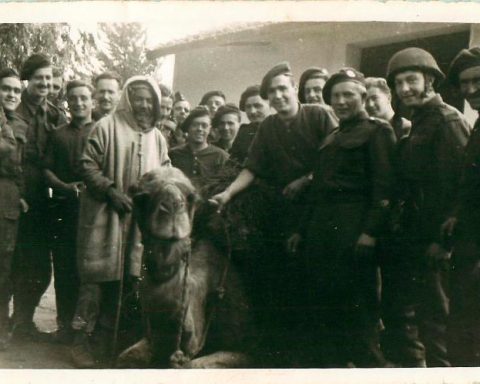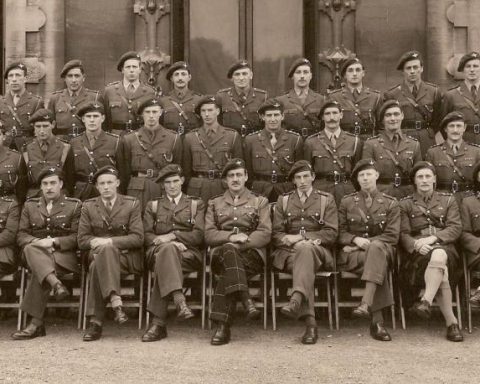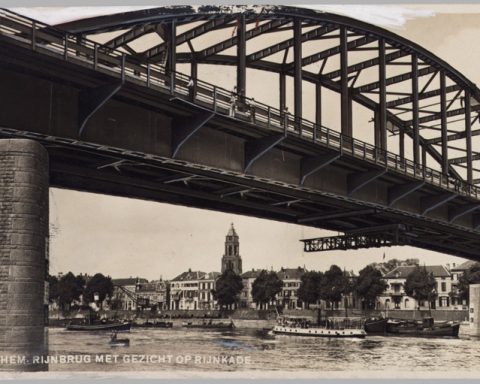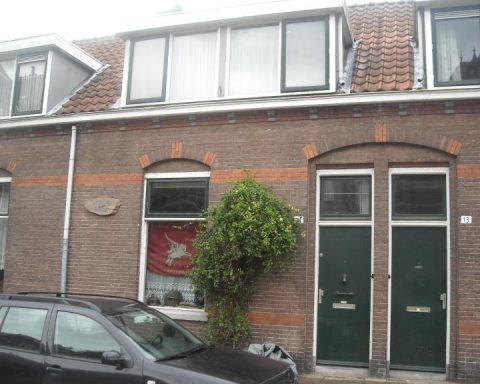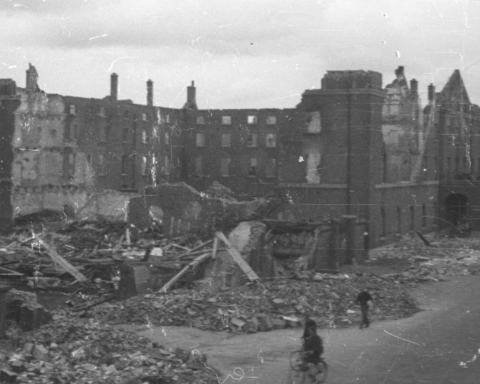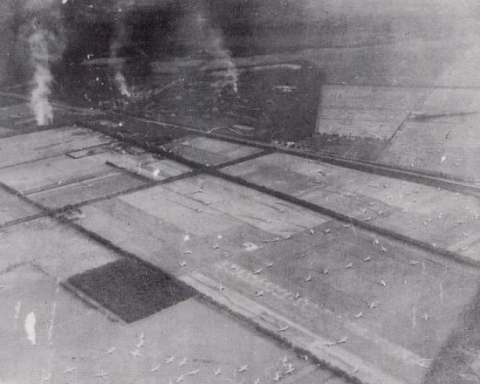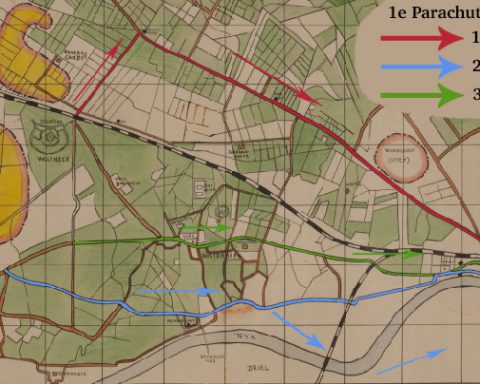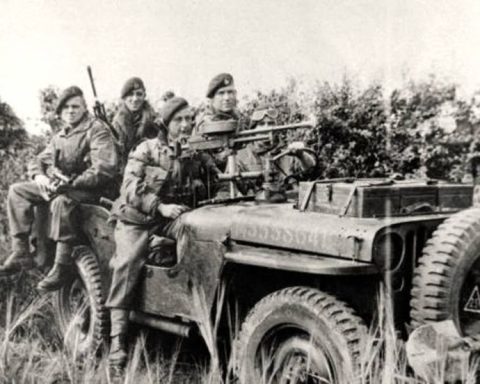When you look at the history of airborne landings during World War II, the main conclusion is that air landings were unsuccessful even in the years before the Battle of Arnhem.
In September 1944, 12,000 British and Polish paratroopers landed west of Arnhem to secure bridges across the Rhine. At the same time, American paratroopers were dropped at Grave and Nijmegen to clear the way for the allied troops who would advance from Eindhoven to Arnhem on the ground.
The Battle of Arnhem is the last allied defeat of the Second World War. British marhall Montgomery’s plan failed due to underestimation of German resistance and the great distance between the drop zones and the city.
An underexposed aspect of Operation Market Garden’s failure is that large-scale airborne landings had never actually been very successful before.
Three major airborne landings took place during the Second World War prior to the Battle of Arnhem. All three of those operations ended in failure. Montgomery could therefore have known that his plans with Arnhem had only a very small chance of success.
The Battle of The Hague
The first large-scale airborne landing in history already took place in the Netherlands. On May 10, 1940, the Germans wanted to enforce a quick victory over the Netherlands by capturing the Dutch government, royal house and army command via airborne landings.
To achieve this, the German 22nd Airborne Division was dropped on and around airports near The Hague. The German division, which together accounts for some 11,000 men, landed at the airports of Ypenburg, Volkenburg and Ockenburg near The Hague.
The German goal was to quickly eliminate any Dutch opposition from these airports and advance to The Hague to force the government and queen to sign the surrender on 10 May 1940.
The Germans expected an easy victory.
It turned out differently. In fact, the victory that the ill-equipped Dutch army achieved against the German elite troops is considered the only defeat that the Germans had to deal with during the Blitzkrieg in Western Europe.
The battle of The Hague started in the early morning of May 10, 1940 with the landing of German paratroopers around the airports. The well-organized German paratroopers did indeed capture the airports, but they did not get much further.
The Dutch opposition was much fiercer than expected. Dutch anti-aircraft guns took down many of the (slow) transport aircraft. Dutch machine gun fire pinned down the German troops.
After the Dutch army leadership had hastily sent reserve troops to The Hague, it was even possible to counter-attack the German airborne troops. All three airports were recaptured from the Germans by the Dutch.
However, the euphoria of the victory was short-lived. Four days later, after the bombing of Rotterdam, the Netherlands still had to capitulate.
The battle of The Hague was an expensive lesson for the German army. Of the 1,100 aircraft deployed by the Germans in the airborne landings, 500 were lost. This gigantic number of planes was missed a few months later during the Battle of Britain.
Moreover, the Dutch soldiers had captured more than 1,500 Germans, and immediately put them on the boat to England. Among the prisoners of war were many pilots, which the Germans could not deploy during the Battle of Britain.
Many historians believe that the German loss of aircraft during the Battle of The Hague helped to ensure that the British eventually won the Battle of Britain.
Airborne landings on Crete
After the fiasco of the airborne landings in the Netherlands, the Germans actually wanted to get rid of the airborne troops. However, they changed their mind in 1941.
The British had buried themselves well in Crete, from where the Royal Navy controlled the entire eastern part of the Mediterranean. For a trouble-free supply of Erwin Rommel’s Africa Corps, it was necessary for the Germans that Crete should be conquered from the British.
But how?
Because an attack by sea was therefore not an option for the Germans, an attack by air was chosen. It was the only option the Germans had.
As with the earlier attack in the Netherlands, the first wave of German paratroopers landed at airports. Two small airfields in the west of Crete were planned to be captured quickly, so that reinforcements could then be brought in by air.
Most of the first German paratroopers, however, were slaughtered by New Zealand soldiers. From a German unit of 124 men, 116 soldiers died on the first day.
Quite a few German paratroopers also ended up in the wrong places. It is said that one German parachutist was beaten to death by an elderly Greek with his walking stick.
The course of the battle changed on the second day, when New Zealand troops had inadvertently retreated on a strategic hill near one of the airports.
The Germans immediately took advantage of this opportunity by landing additional troops at the airport and advancing to the rest of the island.
After more than a week of heavy fighting, the Germans finally managed to gain control of the island. But the price they paid for it was enormous.
Of the 21,000 German soldiers who had landed in Crete, 6,500 had been killed, injured or taken prisoner of war. Although the Germans eventually reached their goal, they saw the Battle of Crete as a defeat. The Germans never used airborne landings again.
Airborne landings on D-day
Although the Germans saw the battle of Crete as a failure, the Allies were amazed at the strength of airborne troops.
After the Battle of Crete, therefore, both the Americans and the British also set up airborne troops themselves. On D-day, these airborne troops were deployed on a large scale for the first time.
The American 82nd Airborne Division and the 101st Airborne Division (later known for the TV series Band of Brothers) landed behind the German lines prior to the landings of the ground forces.
The American airborns were given the task of occupying and defending some important intersections and villages before they were relieved by the ground forces.
It turned out to be a mess.
The weather was bad and not all transport aircraft used had a navigator on board. Moreover, because the German anti-aircraft guns were very strong, many of the transport aircraft lost their course.
As a result, the airbornes spread through Normandy. Many paratroopers landed in flooded land and drowned, because they could not disconnect their heavy equipment in time.
After the landings, the paratroopers tried to make the most of it. In the dark they tried to find other paratroopers to march together.
The airborne troops had the advantage that the Germans did not know in the chaos themselves how many troops had landed where. In addition, coastal defense was attacked by the British Navy while the first troops arrived on the landing beaches.
But achieving the predefined attack targets was out of the question on D-Day. 24 hours after the landings, the military leadership of less than half of the 6,000 paratroopers of the 101st division knew where they were.
Where the rest of the troops were was a mystery. Somewhere in Normandy.
Improvising, the troops and their leadership managed to achieve success in the days that followed. But the airborne landings were by no means successful.
When the balance sheet was drawn up at the end of June, it appeared that of the 22,000 U.S. airborne troops that landed on D-day, 9,000 had been killed, injured, or taken prisoner of war.
Raid on Bruneval
Were there never successful airborne landings during World War II? A few, but all of them were small operations with only a few hundred soldiers. German paratroopers managed to capture the Dutch bridges over the rivers on May 10, 1940, and American paratroopers units were successful in landing in Sicily.
The most successful airborne operation during World War II is known as the Raid on Bruneval. In 1942, 150 British paratroopers landed on the coast in France to disassemble a German radar station and take the operator back to England by boat.
The British army command wanted to know how far the Germans were with the development of radar, and for that it was necessary to pick up a radar station from the Germans from occupied France.
Despite fierce German resistance from hundreds of troops, the British paratroopers succeeded. With only a few losses, the airborne troops managed to reach the French coast safely with their loot. There were fast British torpedo boats ready that brought the British back to Great Britain.
The British robbery was one of the first British successes during the Second World War. The name of the commander of the raid? John Frost.

